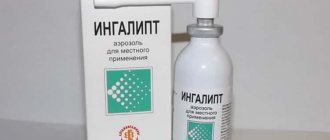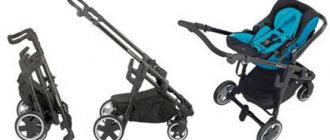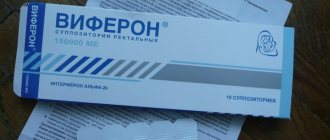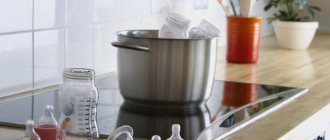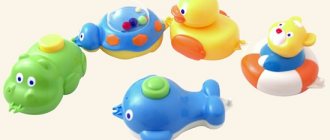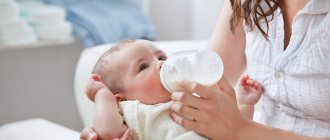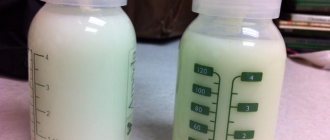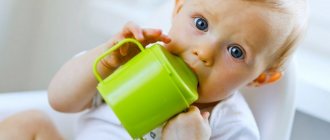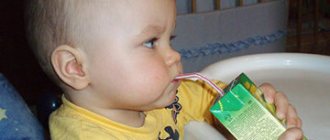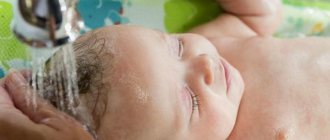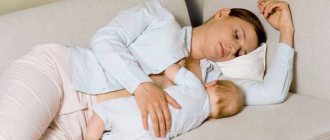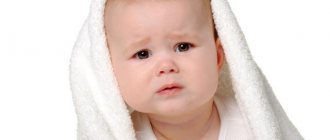The healthiest food for a newborn or infant is not expensive artificial formula, but mother’s milk, which contains all the components necessary for the growth and development of the baby. But sometimes women have problems with lactation, the baby does not latch on to the breast, and he has to be fed from a baby bottle. It is not difficult to learn how to wash such dishes; it is important to choose a natural product that does not contain chemicals for disinfection.
The need for sterilization
The immune system of newborns and infants is not always able to cope with bacteria that live in the external environment. Microbes that enter the baby's digestive tract during bottle feeding cause stomach upset, the baby loses appetite and can become seriously ill. Bacteria settle and multiply in water from taps and wells; the source of infection is the milk formula that is fed to the baby.
Sterilization of children's dishes makes it possible to protect the child's fragile body from diseases of the digestive tract caused by microbes. It is necessary to disinfect diapers and dishes only in the first weeks after the birth of a newborn.
How to properly sterilize feeding bottles: rules and tips
If your baby is bottle-fed, it is important to ensure safety and follow feeding rules. Pediatricians recommend that you thoroughly wash and sterilize your newborn’s bottle before each new feeding! In this article we will look at how to do this correctly.
How to prepare dishes for sterilization
Before sterilization, the bottle is thoroughly washed and any remaining milk mixture is removed from the inside. The mixture remaining in the container must not be left, stored or used at the next feeding! To clean the bottle, use regular soda or baby hypoallergenic detergents.
It is important to choose the right detergents so that the newborn does not develop allergies. Today the market offers a large selection of brands of such products, but not all of them are safe. Therefore, carefully study the composition, consult with your pediatrician and read reviews from other parents.
Japanese brands have been in greatest demand lately, but they are expensive. Yes, and finding such funds is difficult. Choose products without a strong odor that meet GOST requirements. The composition should not include synthetic dyes, fragrances and dangerous chemical compounds (parabens, sulfates, phosphates, etc.). Such products may contain botanicals and glycerin. At the same time, they should be washed off well from dishes at any water temperature.
Baking soda is a good detergent for washing children's dishes. Apply the powder to the sponge and feel free to wash the bottle! Then rinse the container thoroughly. Baking soda is safe for a newborn, and it will easily remove even old stubborn stains. At the end of washing, rinse the container thoroughly in running water.
To rinse the bottle to the very bottom and remove any residue, use a special brush or brush. Don't forget to remove and treat the pacifier! If you use a dishwasher, always wash a newborn's dishes separately from those of an adult and choose mild, safe detergents. The optimal temperature for washing in this case is 80 degrees.
Sterilization methods
- Boiling is the traditional and most affordable way to sterilize bottles and pacifiers. Place several bottles in a separate pan of boiling water and leave to boil for at least 5-7 minutes. Then remove the dishes and place them on a dry, clean towel. The bottle can be used for feeding after it has cooled down.
- Microwave oven is a modern and convenient way. The bottles are placed in a saucepan, filled with water and tightly closed with a lid. For sterilization in the microwave, 6-7 minutes are enough.
- The use of antiseptic tablets is a cold method of sterilization. It is characterized by ease of use and high quality disinfection of children's dishes, but it will require more time. Antiseptics effectively eliminate harmful bacteria. In addition, this method guarantees that the products will not deteriorate when exposed to high temperatures. To prepare the solution, one tablet is placed in a pan of cold water, and then the dishes are lowered into it. Items need to be sterilized under a closed lid for half an hour. After which the bottle is rinsed in boiled water.
- An electric steam sterilizer is a modern and convenient technology that provides high-quality disinfection of newborn dishes and protects items from deformation. You just need to put the bottle in the device, fill it with water and turn on the desired mode. The steam sterilizer can hold up to six items at a time, and the sterilization time takes about 10 minutes.
- A steamer will allow you to sterilize a newborn’s dishes in 5-15 minutes. To do this, water is poured into the lower compartment of the device. Bottles are placed with the neck down, and jars, nipples and spoons are put away at the top. For sterilization, select the “cooking” mode. Remove the dishes when the steamer has cooled down a little.
- The multicooker is also suitable for sterilization. The procedure is very easy to carry out. Bottles and other accessories are placed on a special grid, a liter of water is poured into the bowl of the device and the “steam” mode is turned on. In this case, it takes 8-10 minutes to sterilize the dishes.
Tips for moms
Sterilize dishes and nipples for each feeding! In this case, it is better to sterilize pacifiers and bottles separately. Before the procedure, be sure to wash the container and remove leftover food using a brush, sponge and safe products. Rinse each item thoroughly.
Please note that not every bottle can be boiled multiple times. Thus, plastic products become deformed after several procedures. But many mothers choose plastic, as it is a light, convenient and safe bottle for a newborn. If you choose such a material, choose high-quality food-grade plastic and use the cold sterilization method.
Glass bottles can withstand repeated boiling, so they will last longer. However, they weigh heavier. In addition, the products can easily break. Read more about each material and how to choose the right bottle for a newborn at the link https://vskormi.ru/buys/butilochka-dlya-novorojdennogo/.
Wash the bottle immediately after feeding or boil several beforehand. Remember that you need to prepare the formula for a newborn immediately before feeding. This way, sterilized feeding utensils will be at hand!
vskormi.ru
Sterilization methods
Regardless of the chosen disinfection method, bottles must first be washed using soda or salt, special liquids produced for the care of baby dishes. The walls must be thoroughly cleaned of plaque and milk mixture.
Boiling
To disinfect glass bottles, use a small saucepan, fill it to the top with water and place it on the stove. Place the unwrapped container in it and boil under the lid for about 10 minutes. Do not expose plastic models to heat. The material melts and releases toxins. Before sterilizing bottles, it is recommended to first boil hard water, otherwise the dishes will become coated.
Steam treatment
In the absence of special household appliances, you can destroy germs on children's dishes by using kitchen utensils. Water is poured into a saucepan or stewpan, a colander is placed on top, and jars and bottles are placed on top of it upside down. After the liquid boils, steam is released; you need to hold the pan over it for at least 10 minutes.
Special sterilizer
Disinfecting a child's accessories by boiling takes a lot of time; when disinfecting bottles with steam, it is easy to get burned, and many parents buy sterilizers. The device is manufactured in the form of a reservoir that can accommodate dishes with different neck diameters.
The electric model consists of a housing, a heating element, a container for liquid, operates from a 220V network:
- A glass of water is poured into a special compartment.
- Bottles and nipples are provided.
- Lower the lid.
- Press the power button.
See also
The main reasons and what to do if the washing machine electrocutes
Microwave sterilizers are placed in a microwave, where jars and other utensils are disinfected with steam for 10 minutes. Ultraviolet devices that are powered by mains or batteries do not use water; the bottles are disinfected with rays from lamps located inside the body. Some models of sterilizers not only kill germs, but also warm up the baby's formula.
Multicooker or steamer
Modern household appliances such as multicookers come to the aid of young mothers, in which they prepare dietary dishes from meat, fish, side dishes from cereals and steamed vegetables. Baby dishes, along with pacifiers and nipples, are placed on a wire rack or strainer, the lower bowl is filled with water, the steam mode is selected and the time is set.
Devices absorb the smell of food; before sterilizing children's products, all parts must be washed thoroughly.
Microwave
To heat a portion of the mixture, it is not necessary to light a fire or place a pan on the stove. For this purpose, people are increasingly using modern technology - the microwave. It also disinfects dishes that are filled with formula for the baby. Place the bottles in a glass bowl, which is placed in the oven, for 3 minutes. Nipples and elastic bands are sterilized separately.
Special means
Modern parents often travel with children. To feed your baby on the road, the dishes must be disinfected. Pharmacies sell special antiseptics that destroy germs.
In cold water
It is not always possible to have boiling water at hand; tablets containing sodium dichloroisocyanurate are not dangerous for children and dissolve in cold water. To disinfect bottles:
- The composition is poured into a deep bowl.
- Lower the dishes and nipples so that they are completely in the liquid.
- Leave for half an hour.
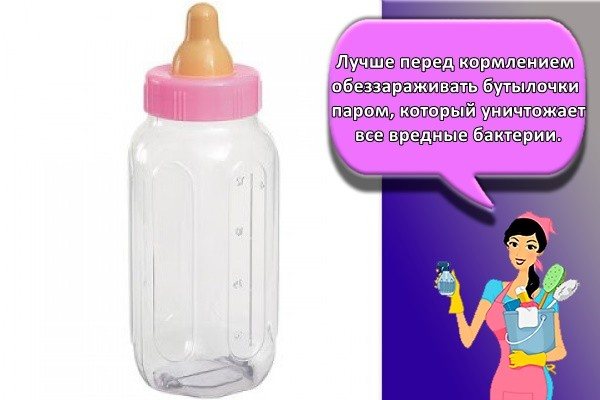
It is not recommended to use tablets every day. It is better to disinfect bottles with steam before feeding, which destroys all harmful bacteria.
How to sterilize baby bottles at home in cold water?
At first glance, it seems that it is impossible to disinfect children's items using cold water, because all previous methods are based on high-temperature treatment. But in fact, modern chemists and biologists, for the convenience of parents, have created drugs that can do this, and with minimal effort on your part. Similar chemicals can be purchased at pharmacies.
Procedure:
- Dissolve the special tablet in cold water according to the instructions.
- Place all items that require sterilization in the prepared solution for 30 minutes.
- After the time has passed, remove the bottle and all its parts from the liquid and rinse thoroughly in boiled water.
Important! The use of such preparations does an excellent job of disinfecting dishes without damaging them. But it is not recommended to get carried away and use them constantly, so as not to harm the health of your baby.
How and what to wash
The dishes to be sterilized must be clean and dried, without any vegetable puree or mixture dried on the walls. Jars, cups and bottles are washed with liquid formulations made from vegetable oils and herbal extracts.
Conventional means
To clean glass children's dishes, sometimes boiling water and a brush, which is scalded with hot water, is enough. Plastic items cannot be heat treated, but can be gently washed with soda, being careful not to scratch the dishes.
Regular salt copes with fat, cleans bottles of vegetable puree, mustard powder removes the remnants of porridge, butter, and milk formula. Any contamination is removed with laundry soap. Citric acid removes plaque and lightens dark stains from fruit juices.
With vegetable oil
Not all parents trust soda or table salt and buy special detergents in household chemicals departments that do not contain:
- aggressive dyes;
- synthetic fragrances;
- phosphates;
- oil compounds.
See also
How to quickly get rid of centipedes in a house or apartment
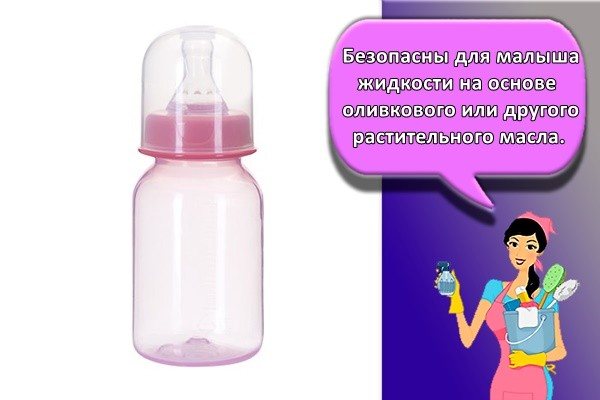
Liquids based on olive or other vegetable oil are safe for babies. Such gels remove fat, are easy to rinse, have a delicate scent, and soften the skin.
With citrus essential oil
The quality of organic products that are produced specifically for washing children's dishes is confirmed by the presence of environmental certificates. Some gels add essential oils of tangerine, rose, lime, lemon, which do not irritate the skin of the hands, but have an antibacterial effect.
Based on sucrose ester
Hypoallergenic liquid products are produced for washing bottles from which formula milk is fed to newborns and infants. They contain a vegetable emulsifier obtained from cane sugar and palm oil. Gels with ether have antimicrobial properties.
With healing chamomile extract
Some plants contain tannins, flavonoids, organic acids, and essential oils, which give them healing powers.
Pharmaceutical chamomile functions as an antiseptic, has bactericidal properties, and is added to cosmetics and liquids used to wash children’s dishes.
Professional compositions
Many parents, caring about the health of their children, buy balms and gels that are produced by well-known foreign and domestic companies and corporations specifically for washing feeding bottles.
Aqa Baby
The product produced under this brand removes food debris and cleans pacifiers, dishes, and toys from germs. The gel contains active components that are harmless even for a newborn. The solution is easily rinsed with water and does not remain on the walls of glass or plastic bottles.
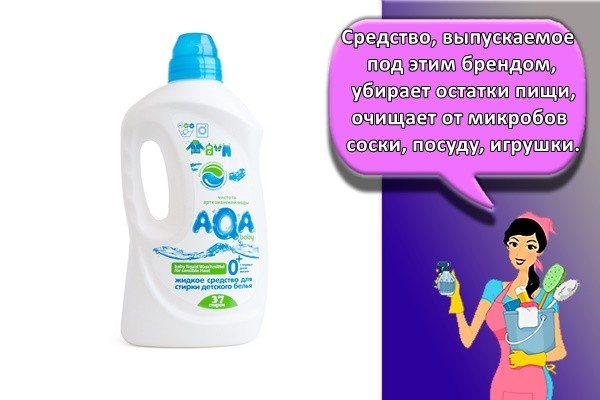
Pigeon
It is economically used and kills germs, a product developed by a company from Japan. The main substances contained in the gel are of plant origin; it can be used for washing nipples, fruits, and dishes. Pigeon is sold in a 700 ml plastic bottle.
Nuk
The German brand produces high-quality and safe products for the care of children's clothes and dishes. Nuk brand products have gained popularity among parents from different countries because:
- Contains only natural ingredients.
- Doesn't dry out, but softens the skin.
- Completely rinsed.
The liquid composition is used for washing bottles, nipples, and silicone products. It contains no dyes that cause allergies in children.
Bio Mio
The product, which is produced by a company from Denmark, is suitable not only for washing dishes, but also for food products. The gel has a pleasant smell, softens the skin, does not contain preservatives, removes fat, and is produced on the basis of tangerine oil.
"Umka"
Mothers who try to protect their baby’s body from exposure to microbes wash bottles with a domestically produced balm with herbal extracts. “Umka” cleans dishes from any remaining mixture, regardless of the temperature of the liquid, does not create a large amount of foam, and does not form residues after rinsing.
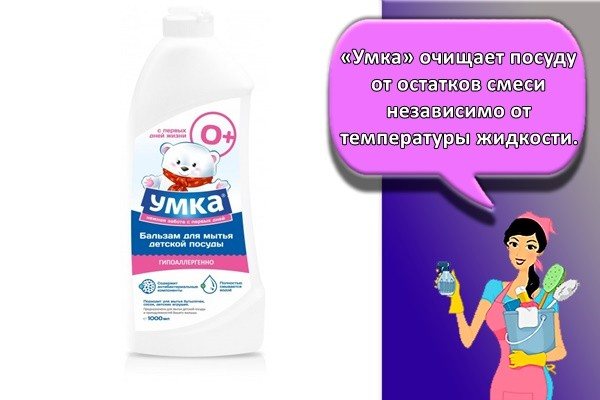
Gel "Nevskaya Cosmetics" for children
The thick consistency product, sold in 500 ml plastic packaging, effectively washes away grease and food, and kills germs on dishes.
The gel contains citric acid, which brightens darkened glass, the composition is safe for babies, and can be rinsed with running water.
"Eared Nanny"
The liquid product, developed by a domestic company, has antibacterial properties, contains herbal extracts, disinfects cups and bottles, washes away almost all contaminants, removes food odors, and does not cause allergies even in infants.
See also
What to do if the key in the door lock is broken, how to pull it out and open it yourself
Preparing for sterilization
It is a mistake to think that you can sterilize immediately after using a bottle. Before starting, it is imperative to thoroughly wash all the parts of the children's dishes; they should not have any remnants of baby food.
Important! Experts recommend using baking soda or cleaning products specially designed for this purpose to wash dishes for newborns.
To achieve the best effect:
- Use pipe cleaners that reach to the very bottom of the bottle.
- Treat the pacifier separately from other elements of the container.
- Children's dishes can also be washed in dishwashers using special mild detergents.
Important! Pediatricians recommend that items for feeding newborns be processed in the dishwasher separately from the plates and cups of other family members.
Cleaning brushes
Plaque settles on the walls of the bottles, food debris accumulates, in which microbes begin to multiply. Not all detergents dissolve deposits; they can be removed with a special sponge or other device.
With foam tip
There are several types of brushes; they do not scratch glass or plastic, but a product with a foam tip that extends when you press a button copes with dirt and deposits.
Companies Dr. Brown
The brush, produced by a well-known company, consists of a sponge and bristles, easily penetrates inside a bottle with a narrow neck, cleans the remaining mixture, removes plaque, and attaches to the surface with a suction cup.
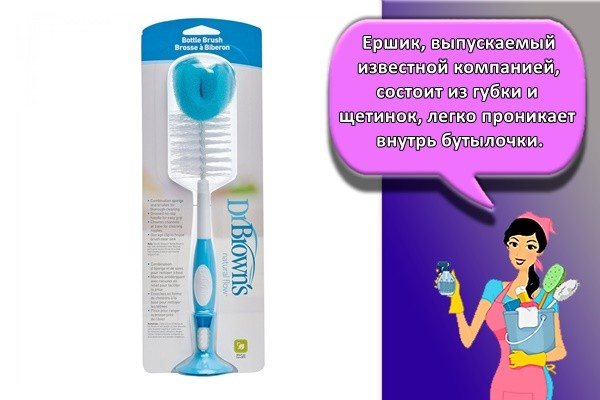
With sponge
It is convenient to wash pacifiers and baby dishes made of glass and propylene using a brush with a sponge made of natural porous material. When the brush rotates, the bottom of the bottle is well cleaned and milk residues are removed from the protrusions.
2 in 1
A double-sided brush equipped with a sponge is designed for daily care of baby dishes, pacifiers, and pacifiers. It not only removes food debris, but also kills germs with the help of bristles.
Chicco
The brush of this model performs several functions. Tweezers are built into the handle of the item, which makes it easy to remove bottles after sterilization.
How to wash baby bottles?
Anyone who has a small child in their family is no doubt familiar with feeding bottles, pacifiers, diapers, pacifiers, and probably knows how and with what to wash baby bottles and other items surrounding the baby. Absolutely all young parents need such knowledge, because incorrect actions regarding cleaning children’s household items can not only damage the things themselves, but also lead to a negative reaction from the child’s body. The thing is that a newborn baby has not yet had time to fully develop its immune system, and this makes it more susceptible to bacteria that are found on improperly treated surfaces.
Important! When purchasing plastic baby bottles, make sure the plastic does not contain the chemical BPA. It is very toxic and can lead to serious health problems for the baby. Many countries have already banned the production and sale of children's items containing this chemical. Unfortunately, our country is not included in this list yet. Therefore, parents need to be more vigilant when buying children's products.
How to properly wash feeding bottles?
To ensure ideal care for your feeding utensils, you need to know detailed instructions on how to wash baby bottles. It looks like this:
- Immediately after feeding, rinse the bottle in the sink:
- Even if you don't have time to wash more thoroughly, just rinse the dish. This will prevent dried milk and dirt from accumulating on the sides and bottom of the bottle.
- Use hot water to rinse. This will make rinsing more effective.
- To make the washing process most effective, you need to know what is the best way to wash baby bottles. When buying a feeding bottle, immediately purchase the following products:
- A brush for washing baby dishes and a special brush for washing the rubber pacifier. Some bottles are difficult to clean near the bottom and in the neck area; a brush will help with this. Nipple brushes have the ability to collect bacteria from their surfaces.
- A product designed specifically for washing baby bottles. It differs from regular dishwashing detergent in that it is more gentle and mild. It is hypoallergenic, non-toxic and, equally important, does not leave soap residue on the surfaces of the container after rinsing in hot or cold water.
- To eliminate the possibility of foreign bacteria and chemicals coming into contact with baby dishes, it is recommended to wash the sink itself before washing it.
- For best results, use a hard sponge, baking soda or other natural disinfectant.
- After cleaning the sink, fill it with hot water as hot as possible and soap.
- Before washing feeding bottles, they must be completely disassembled. Each part - bottle, nipple, ring, cap - is washed separately.
Important! Separate washing is recommended because a large amount of milk tends to accumulate between the ring and the nipple, which encourages rapid bacterial growth.
- Submerge each part in hot, soapy water.
- Use a bottle brush and a pacifier brush, which can also be used to wash the ring.
- If the instructions for using a feeding bottle say that it can be washed in the dishwasher, then use this method, which will significantly save you time.
- Place the bottle upside down on the top rack of the dishwasher, away from the heating elements.
Important! Today, baby goods stores can offer their customers a special basket for washing rings and pacifiers that are installed in the dishwasher.
- To get rid of soap residue on the surfaces of the bottle and its elements, after washing they should be thoroughly rinsed under running water at the highest possible temperature.
- Place all baby bottle parts on a drying rack.
Important! Dry the bottle in a well-ventilated area so that it dries completely quickly. Otherwise, fungus and mold may begin to develop on its surfaces.
- Wash your hands thoroughly with soap before picking up a dry baby bottle and offering it to your baby.
Bottle sterilization
This method is very effective in destroying all possible bacteria on the surfaces of children's dishes. If previously it was advised to sterilize a bottle after each use, now this process is considered not so necessary.
Important! Recent research from the medical community has shown that washing feeding bottles with hot, soapy water is sufficient to clean them. The main condition remains the purity of the water and its suitability for drinking.
And, nevertheless, there is no way to do without sterilization in the following cases:
- Before using dishes for a newborn for the first time, immediately after purchase.
- After each wash of the bottle with water from a well or borehole.
- After a child's illness.
- After long time use.
Electric and microwave sterilizers
The principle of sterilization in these devices is the treatment of dishes with steam at a temperature of +100 C. Steam at such a high temperature kills all bacteria and microbes on the surfaces of the bottle. To use these devices correctly:
- The electric sterilizer should be filled with a small amount of water. Place the rings, nipples and bottles inside at some distance from each other. Sterilization takes approximately 10 minutes.
- With a microwave sterilizer, the actions are essentially the same. After placing all items that require sterilization, place the device in the microwave. Set the microwave to full power and turn it on for 4-8 minutes.
Important! The operating time of a microwave oven depends solely on the power of the device itself.
Sterilization in a steamer
A steamer is a fairly common item in the kitchen of a young housewife. With it you can not only prepare healthy and tasty food, but also, if necessary, sterilize children's dishes. For this:
- Pour water into the bottom compartment of the steamer.
- Place the bottles neck down.
- Other elements of the baby bottle can be placed in the upper part of the steamer.
- Turn on the device in the “cooking” mode for a period of 5 to 15 minutes.
- Wait for the steamer to turn off and cool down.
After this, children's dishes can be used for their intended purpose.
Sterilization in a multicooker
It is very easy to sterilize in a multicooker:
- Pour 1 liter of water into the main container of the multicooker.
- Place all baby utensils that require sterilization on the steaming rack.
- Turn on the “steam” mode, setting the time to 7-10 minutes.
Microwave sterilization
- To carry out this process in a microwave oven, it is better to use special bags or additional containers with a lid.
- Children's dishes are placed in a container or bag and filled with cold water.
- After 7-8 minutes of microwave operation, the baby bottle will be sterilized.
Boiling
Mothers, grandmothers and their predecessors were not familiar with either microwave ovens or sterilizers in their youth. And yet, they took care of their children no worse than modern mothers. Today, a large number of young parents use the old and proven method of sterilization - boiling.
This is done very simply:
- Pour water into a large saucepan and bring it to a boil.
- Place all parts of the feeding bottle into the boiling liquid.
- Cover the pan with a lid and boil the items - at least 3 minutes.
Important! This sterilization method is most suitable for glass bottles. If the plastic bottle does not contain the above-mentioned harmful component - bisphenol-A, then it can also be treated using this method.
Cold water sterilization
This process can be carried out using cold water and a special drug that has antiseptic properties. In this case, you need to wash baby bottles to get the sterilization effect with products such as Milton or Bebe Comfort. They are sold in pharmacies. According to instructions?
- They are dissolved in cold water and children's dishes are placed in the solution.
- After half an hour, the dishes are removed from the solution and thoroughly washed with boiled water.
Important! This method protects children's dishes well from germs without damaging them.
How to wash baby bottles when traveling?
Children never allow their parents to relax. Therefore, when traveling you need to be prepared for various minor troubles. To solve the question of how to wash baby bottles during a trip, you should always have a small container of soap and a brush with you.
Important! It is best to place the brush in a sealed zip bag. This way you will protect it from external bacteria that you don’t need.
How to proceed:
- If you have bottle cleaner and a brush, you can wash baby dishes in any sink.
Important! Remember the rules on how to wash newborn bottles. Follow them strictly, even if you are far from home.
- When traveling, disposable sterile bottle inserts will come in handy. With their help, you can get by with one bottle throughout your trip and wash it only once a day, for example, in the evening.
Important! The inserts must be changed after each baby's meal.
- Find out if your overnight stays and stops have microwave ovens. If available, take a portable microwave sterilizer with you on your trip.
- If a microwave is not available to you or for other reasons you cannot use a sterilizer, then you can get by with an ordinary kettle of water. Pour boiling water over all washed parts of the baby bottle.
- After washing, lay the bottle and its elements on a clean towel to dry.
Important! Use this towel for these purposes only.
When taking care of your baby's health, be sure to take care of the cleanliness of the objects that surround him. This is especially true for children's dishes, which a child uses in the first months of life. If you approach this issue correctly, then washing baby bottles will not take you much time and effort, and the baby will be protected from unnecessary microorganisms.
serviceyard.net
How to remove yellowness
Over time, a reddish coating appears on plastic dishes. It is effectively cleansed by a gel produced under the Nuk brand. In the absence of this remedy:
- You need to pour the cereal into the bottle, fill it with water, close it and shake thoroughly.
- Pour a soda solution into the dishes and wipe with a brush.
- Yellowness is removed with boiling water and a washcloth.
If bottles are disinfected in a sterilizer, plaque will not form. To remove unpleasant odors, use a toothbrush.
How to wash baby bottles?
This question worries many parents today. To some, washing seems like a tedious, boring activity that they can completely do without. However, this manipulation cannot be skipped. Its absence can affect the child's health. If you need to know how to wash baby bottles, consult your doctor for advice. He will give all the necessary recommendations. A foster nurse visiting the baby can also help in this matter.
What is the best way to wash baby bottles?
The main rule is to do this immediately after feeding. It is very important to keep the dishes clean; newborns are susceptible to various infections.
After purchasing a bottle, sterilize it. This action does not have to be performed after every meal; it will be enough to wash with soap and rinse. The main task is to thoroughly wash baby bottles and pacifiers with a brush and pour boiling water over them.
How to wash baby bottles:
- baby soap;
- soda solution;
- boiling;
- sterilization;
- baby detergents;
- under running water.
Some parents, on the advice of their grandmothers, wash dishes using folk remedies. Thus, they fight against bacteria that can settle there. When it comes to figuring out how to wash baby bottles, housewives resort to mustard powder, soda, and lemon.
The older generation absolutely refuses to use other detergents. However, there is a whole list of ways.
This should be done after each feeding. First, the dishes are freed from food residues. If necessary, use a brush if mold has formed in the baby bottle. In such cases, wash with soap and warm liquid.
How to wash baby bottles:
- pay attention to the bottom. If a dirty baby formula bottle has been sitting for a while, there will be deposits that need to be soaked off;
- when you have a product for washing baby bottles at home, you can use it for soaking;
- Having thoroughly washed and rinsed the dishes, wipe them dry with a towel specially designed for this purpose;
- Baby bottles and pacifiers can be washed in the dishwasher. However, it is recommended to avoid this method if the mother is in doubt about which baby bottle cleaner to choose. Conventional detergents for such partings can cause allergies.
Many parents, having raised a child, have not determined what is the best means for washing baby bottles, because they have never used anything. Each detergent contains chlorine, phosphates and other substances harmful to the baby’s body in varying quantities. In order not to harm the baby, they washed the containers with folk remedies, rinsing them under running water.
Is it possible to pour boiling water into a baby bottle? Yes, if they are glass or plastic, but do not contain BPA. An old method of sterilization is also to dip the container in boiling water and keep it there for a while. You can wash baby bottles with boiling water and then leave them to dry.
Brush for cleaning baby bottles
It has been proven in practice that this item easily cleans children's dishes from deposits and dirt accumulated in them.
There are the following types of brushes:
- brush with a foam tip. It cleans delicately and does not scratch. The handle contains a button for its extension;
- brushes from Dr. Brown`s combine a combination of bristles and sponges. There is absolutely no risk of damaging the inner surface. The base has a suction cup for easy storage;
- brush for washing nipples and bottles with sponge. Easily removes food debris from inside;
- “2in1” brushes are designed for washing bottles and nipples. The bristles have antibacterial treatment;
- The CHICCO brush is multifunctional. In addition to its main activity, it can be freely converted into forceps that grip the bottle after sterilization.
How to choose a brush for washing baby bottles? Pay attention to the length of the container; your hand should not get inside. Width is also important. For narrow dishes, choose a thin baby bottle brush. The shape of the product matters. If the container is curved, then it is better to wash baby bottles with a curved brush.
What is the lifespan of baby bottles? If everything is in order with the container, it does not need to be changed. First of all, this statement applies to glassware. When it is in excellent condition, it will last for a long time. It is recommended to change Avent bottles once a year. If a crack appears on the container, it must be replaced immediately. The shelf life of baby bottles is determined by their wear and tear, and they begin to release toxic substances.
It is very important to wash baby bottles properly. This is the first dish for a baby, where bacteria can grow in the milk environment and harm the health of the baby.
imalishka.ru
Available funds
How to wash baby bottles so as not to harm the baby? It is allowed to use detergents that do not pose a threat to it. For example, it could be laundry or baby soap. It is also permissible to use a product designed specifically for washing children's dishes. The packaging must contain a corresponding mark.
Some moms and dads prefer traditional recipes that have been tested for centuries. They wash the bottles with table salt, baking soda, and mustard powder. Conservative parents do not trust modern detergents, and rightly so. All of them are tested for harmful substances.
We suggest you familiarize yourself with the TV in the children's room at what height
